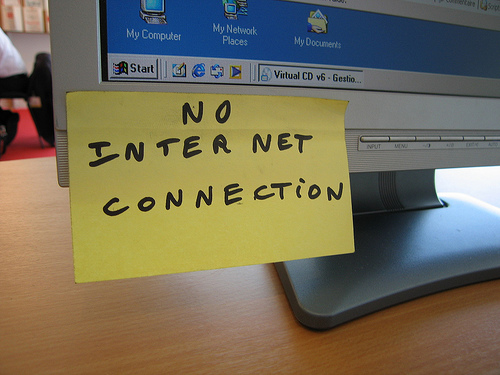With the internet being such an integral part of everyday life, business especially, the speed and reliability of your internet access has become more important than ever. Internet access speed is a measurement that entails how fast data can be transferred from the internet to the computer it is connected to. An exact speed cannot be guaranteed as there are a number of factors that affect it depending on the connection. However, there is one technology that promises to deliver all the speed you desire and then some – burstable internet access. But there’s more to it than meets the eye…
What is Burstable Internet Speed?
A burstable internet service is one that allows you buy a certain amount of bandwidth, supposedly on a pay-as-go model. In theory, it essentially enables you to utilize a DS3 or more commonly, T1 service without paying for the bandwidth you do not use. Since the full amount is made available to you, should you exceed the monthly limit, your internet service will continue to perform at an optimal level. This pricing model is quite similar to most of the cell phone plans currently on the market. While this appears to be an ideal solution, burstable internet access opens up the door to a world of potential disadvantages.
The Cost Factor
The biggest downside to burstable internet access is cost. This is attributed to the fact that T1 access is far more expensive than DSL, even though the actual speeds are very similar. In addition, it is very likely that you will be charged overage fees for the service once your usage needs suddenly increase. Although burstable internet could be a great choice for businesses that require the utmost in scalability, the threat of higher costs makes it unappealing to gamers, peer-to-peer users and the rest of the internet community who frequently download content from online.
A Clever Yet Deceptive Marketing Ploy
The burstable bandwidth concept is confusing to the most savvied of internet users. Truthfully, it is merely a trick commonly employed by today’s Internet Service Providers. These companies allow you to temporarily enjoy the highest speed, but after a certain amount of time or once the bandwidth quota has been exceeded, they automatically knock you down to a slower speed. In most cases, the service provider leaves all the specifics of when this actual bursting occurs out of their standard literature. They typically advertise the rare, best-case number when promoting the service. When and if this quote-on-quote bursting is mentioned, it is usually tucked away in the fine print.
Holding Your ISP Accountable
Although it may seem like a no-win situation, there are ways to keep your service provider in check about its burstable claims. Here are few questions you should ask to find out exactly what you are paying for:
- Can you provide me with something in writing that explains how the bursting service works?
- Am I charged or penalized for using higher speeds?
- How long am I allowed to “burst”? 10 seconds, 10 minutes or 10 hours at any given time?
- Can I exchange the bursting feature for a flat-rate service if I am not satisfied?
While these questions are not guaranteed to get satisfactory answers from your ISP, it is a step in the right direction. The best way to avoid the madness entirely would be to maintain consistency with a flat-rate service that suits your bandwidth usage needs more accurately. After all, most of us have been getting by just fine with the old method, so why feel the need to burst?



Tim
Just makes you wonder if people understood, that basically your download speed after the bursting service has elapsed, is coming in at the same rate. Meaning anything with speeds over 15 Mbps that is, is pretty much a wash. So if the bursting service periond is less than a minutes or there abouts it doesn’t pay to spend extra money for anything higher than 15 Mbps. Until the back bone technology is upgraded to push data through faster, there is no rush to pay from higher downloads speeds, correct?